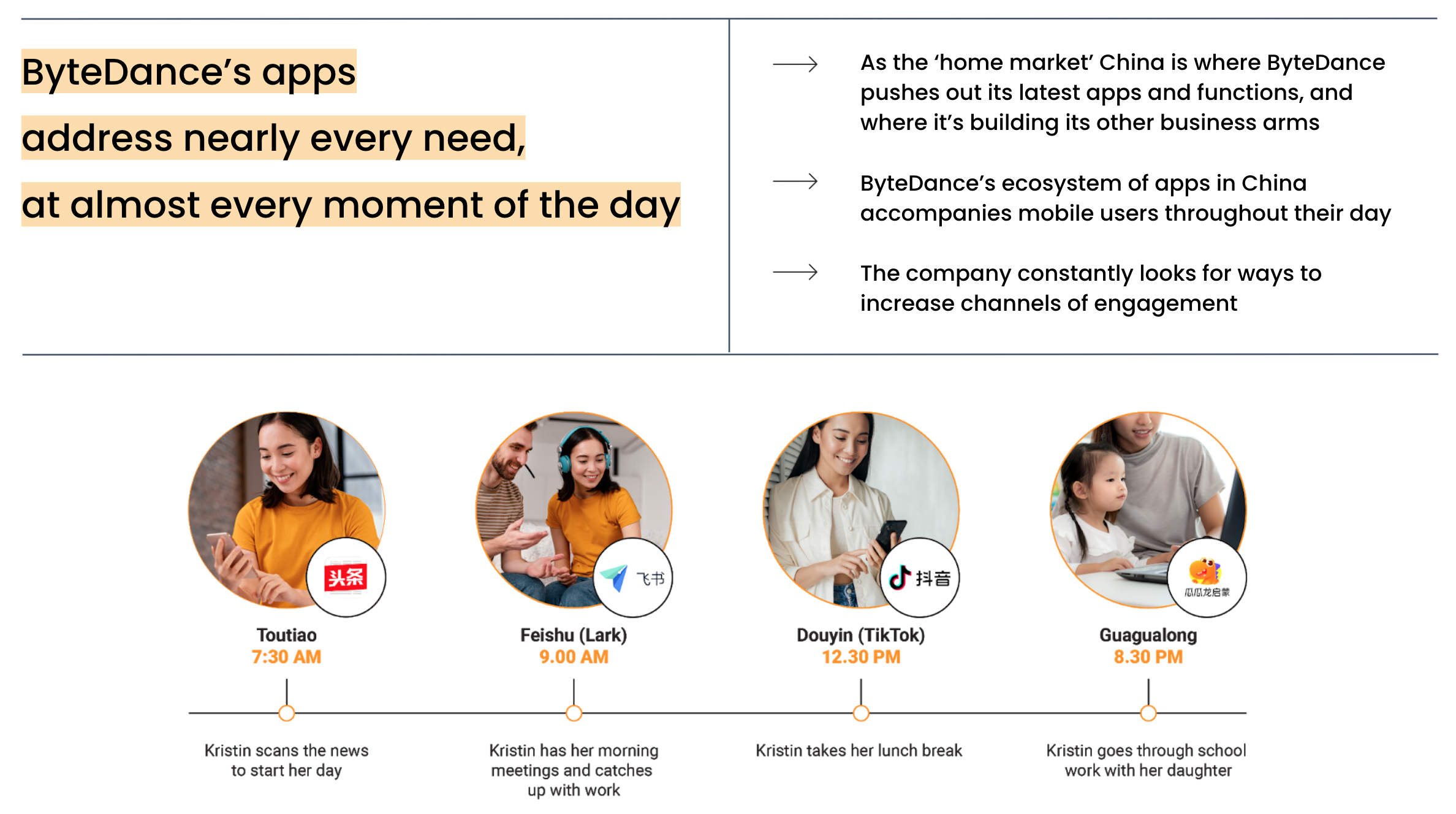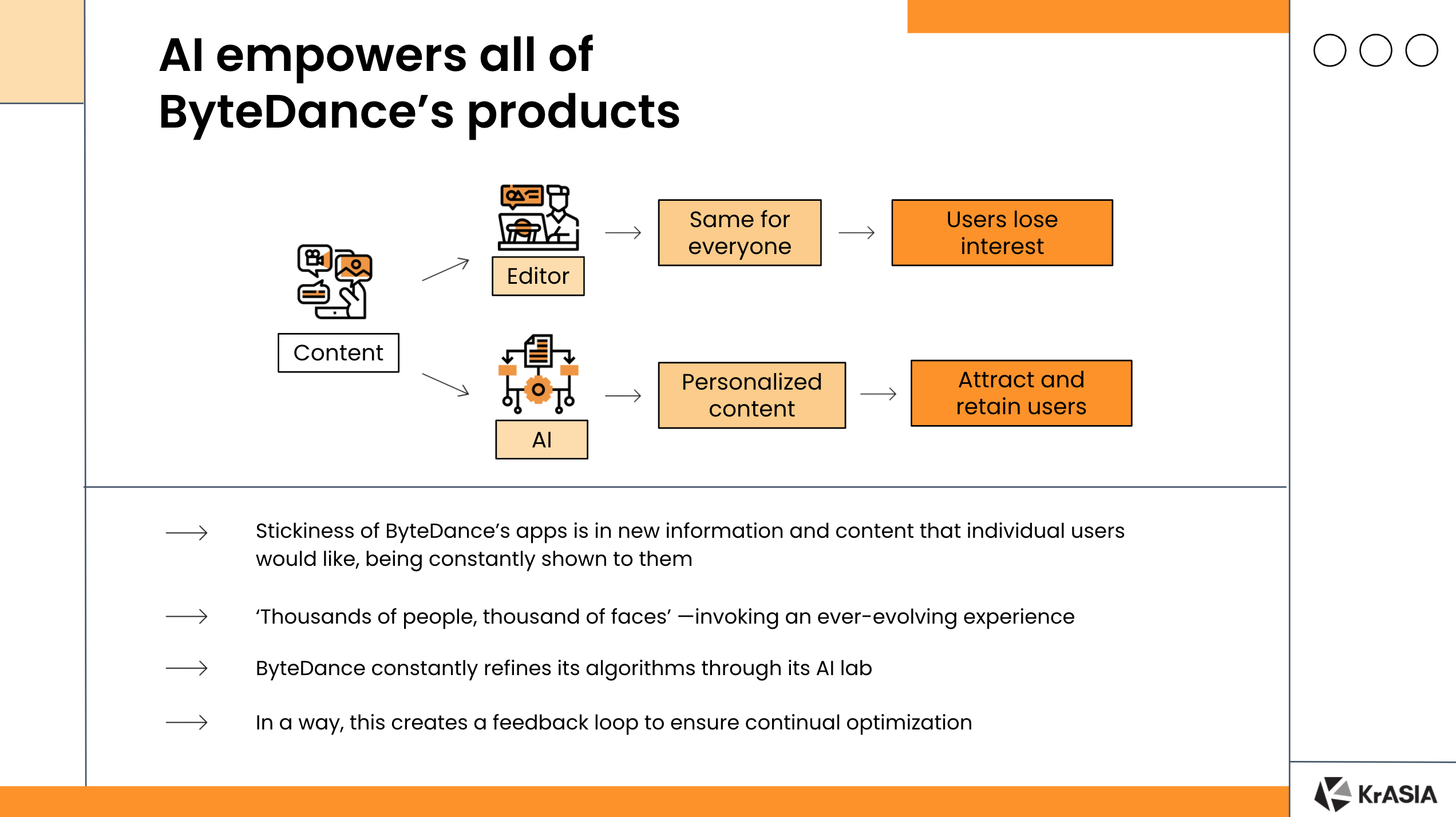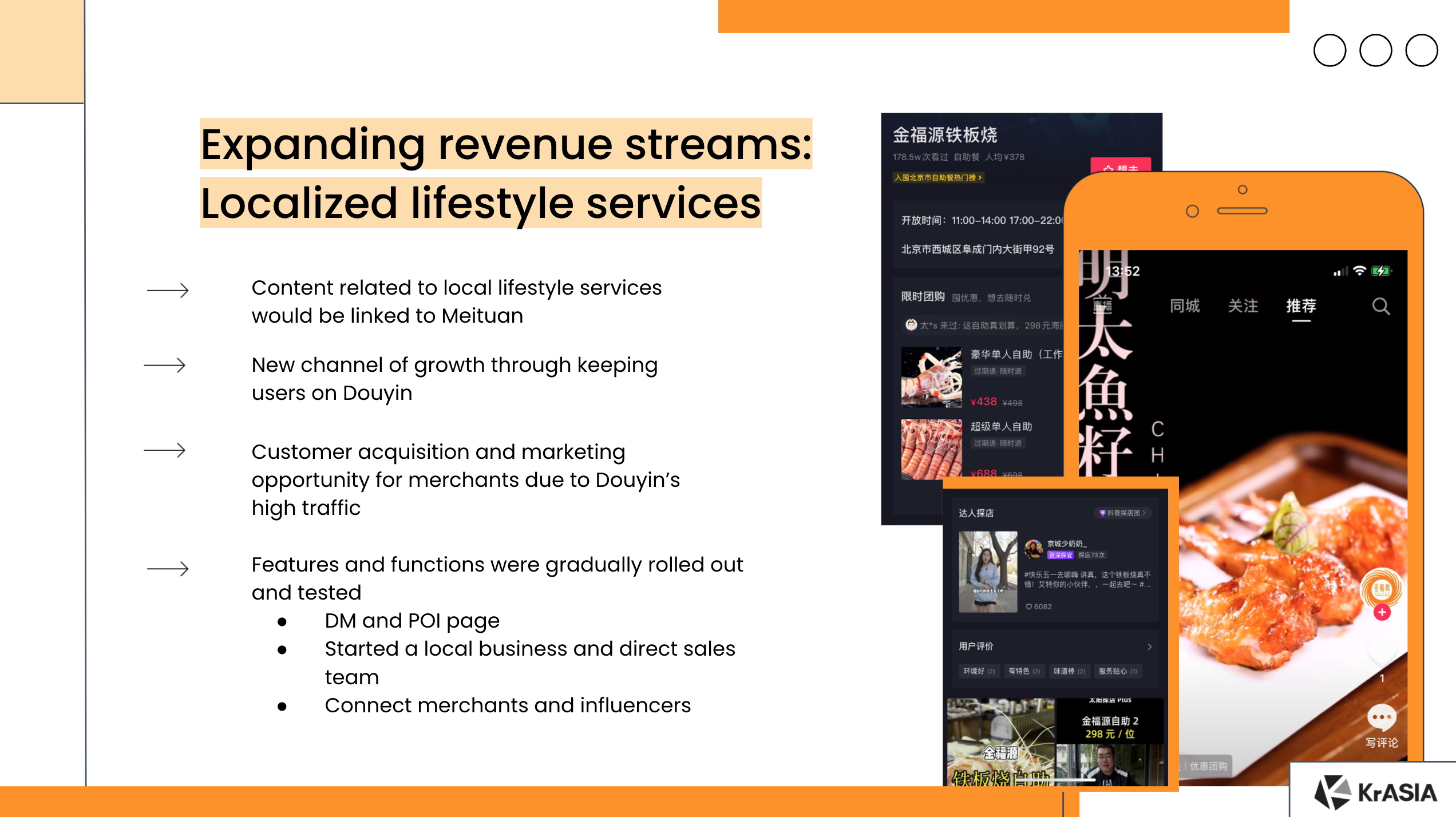Decoded is KrASIA’s new series where we unpack Tech Giants to help you understand and contextualize them better, in 1 hour. We’ll be looking at business models, winning strategies, shortcomings and digging into what makes these companies tick. Stay updated about our next episode by subscribing to our China Venture Roundup newsletter!
Scroll down for a snippet of what a Decoded episode looks like. If you would like to watch the presentation in full, please send a request email to [email protected].
To kick off the very first episode of Decoded, the KrASIA team gave a presentation on ByteDance’s Digital Ubiquity. Valued at ver USD 400 billion, this mega-startup is no doubt one of the most talked about tech companies globally. All the more so as it made a splash globally with Tiktok – the first Chinese-originated B2C app that is virally popular around the world. Giving the world a taste of how ByteDance is changing content distribution with AI.
In this episode, the team gave a panoramic overview of the company, introduced some of its operational strategies and dived into several of its business lines.
Panoramic Overview
At present, ByteDance has apps available for download in over 150 countries and in more than 75 languages. Three apps in particular lead the way — Toutiao (ByteDance’s new aggregator app), Douyin (the original Chinese TikTok) and TikTok. And while Tiktok’s international performance is undoubtedly impressive, it is important to understand how ByteDance’s apps perform domestically. After all, it is the market where ByteDance releases its latest technologies and app functions, and where it’s building its other business lines.
ByteDance’s apps are integrated into the lives Chinese users, being used at different times throughout the day. One could read the news on Toutiao in the morning, use Feishu during the work day to collaborate, as well as take breaks and connect with others on Douyin. To imagine these interchangeable touch points in a day —

Operational Strategies
The team moved on to discuss some of the key strategies that make up ByteDance as an entire organization. At the heart of it all is ByteDance’s AI technology and how it empowers many of the company’s products. ByteDance is a very successful case of applying AI to mainstream consumer-facing apps / products, specifically for recommending personalised content to a user. This was first seen in their flagship app, Toutiao. Simply put, the algorithm behind Toutiao was able to figure out what the users liked to read and would then show similar articles and relevant topics to them.
The key distinction here, between apps like TikTok and Instagram, is that the ByteDance started with the very intention of providing their users with customized content and they continuously build their apps around that. This affects the entire make up of how the product is designed and what qualifies as signals that the AI algorithms pick up on. For example, the main feed on ByteDance’s apps are all recommendations as opposed to feeds generated to show content by people you already follow on Instagram, Facebook or Youtube.

The team went on to discuss aspects of ByteDance’s organizational structure, working culture, advertising as its main revenue stream, its investments and aggressive hiring practices.
A closer look at selected business units
Besides delving into advantages and strategies of Toutiao, Douyin and TikTok, the team also addressed how ByteDance was looking into expanding its revenue streams. Going deeper into how live streaming and e-commerce has been introduced on Douyin and experimented with on TikTok, ByteDance looks set on building its own e-commerce network by opening its own Douyin Store and barring 3rd party affiliate links on the platform, This shift represents the first major transition for ByteDance, taking its powerful marketing and advertising platform, and turning it into its own e-commerce setup, converting its huge traffic into sales. The company set an ambitious goal for itself this year, to reach GMV 200 million.
Douyin has also begun to offer local lifestyle services, coming into direct competition with incumbent, Meituan. There are undeniable challenges ahead as Meituan holds 70% of market share and has a solid competitive moat by providing many of the businesses on its patform key digital infrastructure.

The team then shared about ByteDance’s newer channels for growth — education, gaming and enterprise services.
Here is a short snippet of the team sharing about ByteDance’s gaming arm. If you would like watch this episode in full, please send a request email to [email protected].
